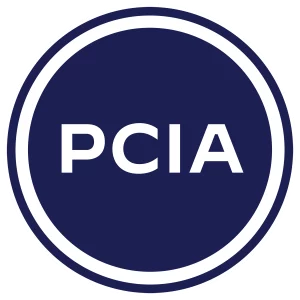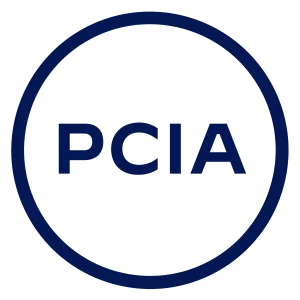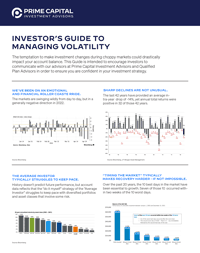Understanding how your cash moves in and out of your accounts is key to achieving your goals.
It’s everyone’s dream to retire comfortably, right? Well, retirement isn’t something that just happens. It takes a lot of care, preparation and commitment. It also takes foresight, or an idea of how your current actions affect your outlook. That’s why it’s so important to understand your cash flow, or in other words, how you get your cash and where it goes once you get it. Let’s talk about optimizing your cash flow and how it can help you forecast retirement, plan your legacy, protect your wealth and put your money to work for you.
What is Cash Flow?
First and foremost, we must define cash flow. Simply put, it’s money coming in versus money coming out. To understand your money coming in, look at all your different sources of income. This can include your salary, secondary income, company benefits, interest, dividends, government benefits and more. Then, we compare it with money going out. Anything you spend money on, even if it’s a necessity, is included in this half of your cash flow analysis. It typically includes payments for your mortgage or rent, car, insurance, food, utilities, and even taxes. It can also include luxuries, which is where some people who don’t have a firm understanding of their cash flow can get into trouble.
Obviously, we’re all for spending your money how you want to. In fact, our mission is to give you the flexibility to use your funds to live your ideal lifestyle, but it’s also important to prioritize. We recommend taking inventory of your current spending habits and categorizing each expense with an “E” for “essential” or a “D” for “discretionary.” Essentials would be your home, transportation and food, while discretionary spending may include your next concert ticket, night out or luxury purchase. If you find a discretionary expense you could easily cut or live without, it can be a good idea to contribute that money toward your future.
Furthermore, tracking your expenses is even easier in the modern age. With new technological developments and intuitive applications, budgeting sheets may be available right at your fingertips. This can help you identify areas where you can cut, as well as those essential expenses you need to cover. As always, this takes commitment. This information is out there, and tools are available to help you become more financially literate. You just need to choose to use it.
What is Spending Rate?
It’s also crucial to understand what spending rate is, as well as why it’s important to track it. Spending rate, which the Clear Picture team often refers to as “burn rate,” is the rate at which you spend your money. It’s the percentage of your income currently going to those essential and discretionary expenses. Granted, some of these expenses are necessary, so you may not think of it as “burning.” It is, however, money you can’t put toward your long-term goals, so we have to include it in this calculation.
Once you’ve determined how much, or what percentage, of your income is being spent on both essentials and discretionary items, identify what you’re able to control and what you aren’t. There may be some overlap here. For example, you can’t control your taxes. You may be able to manipulate them with strategies like Roth conversions, but your obligation is out of your control. You may also be able to manipulate your mortgage or insurance needs, but they may not be immediately controllable.
What you can control often includes your impulse purchases. Typically, these impulse purchases are made when you’re on a shopping high, looking for that little dopamine hit you get when you click the “Order” button. We always recommend adding that item to your online cart and waiting a couple weeks. If you come back with a clear mind and still need it, click that button. If not, delete it from your cart and instead send that money to long-term savings so it can be burned when it matters: in retirement.
What is Debt Ratio?
The unfortunate truth is that our society is based on debt. There are those who lend and those who pay back the lenders. It’s important to note, though, that debt doesn’t always have to be a bad thing. Imagine how frustrating life might be if we had to pay up front, in cash, for homes, cars and business startups. Paying that debt back also keeps banks going, allowing them to continue lending money so people can continue making large, necessary purchases. The key is to ensure the debt you amass is good debt, not bad debt. Let’s break that down.
Good debt is debt that provides you with some sort of leverage. We previously mentioned mortgages, car loans and business loans, but also consider student loans. School can be expensive, potentially stacking your debt tens or hundreds of thousands of dollars high. At the same time, you incur that debt in hopes of gaining new skills and experiences to make you more employable, thereby increasing your earning potential. It seems like an equal and worthwhile trade. The same goes for affordable mortgages, which give you the opportunity to accrue equity in an asset you hope appreciates, or businesses, which help you inject funds into an idea you hope provides you with sufficient income.
Bad debt does not offer leverage. It often includes credit card debt, payday loans, and other types of high-interest loans. Many times, these types of loans are used to make impulse purchases, which don’t appreciate in value or offer any sort of long-term outlook. Then, even if they do appreciate, it’s unlikely they’re growing at you’re the rate of the average American credit card’s APR, which is a whopping 27.89% [1]. Now, find the ratio of your debt payments to your gross monthly income. That’s considered your debt ratio, and if it’s higher than your savings, it could negatively impact your ability to save long-term.
I Have My Spending Rate and My Debt Ratio. Now What?
So, you’ve calculated your spending rate, or the amount you spend divided by your gross income. You’ve also calculated your debt ratio, or your debt payments divided by your gross income. Now, look for inefficiencies, spending habits, or debt obligations that have negative long-term implications. Those impulse purchases may feel good in the moment, but they might also be the reason you retire later or don’t get to live the retirement you dream of.
We always tell our clients to pay themselves first. One way we help our clients prioritize is with our program called Portfolio Payday™. Portfolio Payday™ is our proprietary program that adds a layer to your cash flow. That layer is called a cash management account, and it becomes the first destination for your paycheck rather than your checking account. We first find out how much you need for your necessary expenses, as well as some money for your lifestyle. Then, we send that amount from the cash management account to your checking account. Finally, we use what’s left in that cash management account to build an emergency fund and allocate savings and investments for your future.
This completely automates your cash flow while also helping you and incentivizing you to save and invest. Additionally, Portfolio Payday™ adapts to what you need. Do you need more for your lifestyle? We can increase your lifestyle check sent to your checking amount. Do you find yourself making unnecessary impulse purchases, or even with leftover money at the end of the month? We can send it back to your cash management account, trim your bi-monthly lifestyle check, and watch you save even more. You can learn more about Portfolio Payday™ by clicking here!
We’re ready to help you efficiently manage your cash flow and start paying yourself first. It all begins with a conversation with our team to get you plugged into our services and network of professionals! Give us a call today at PCIA Charleston (843) 743-2926 to take the first step toward a fulfilling financial tomorrow.
Sources:
1. https://www.forbes.com/advisor/credit-cards/average-credit-card-interest-rate/
Advisory products and services offered by Investment Adviser Representatives through Prime Capital Investment Advisors, LLC (“PCIA”), a federally registered investment adviser. PCIA: 6201 College Blvd., Suite 150, Overland Park, KS 66211. PCIA doing business as Prime Capital Wealth Management (“PCWM”) and Qualified Plan Advisors (“QPA”). Certain services may be provided by affiliates of PCIA.
032524019 JG





